Home / Albums / Prehistoric 263

 Flying dinosaurs - Pteranodon
Flying dinosaurs - Pteranodon Flying dinosaurs - Rhamphorhynchus
Flying dinosaurs - Rhamphorhynchus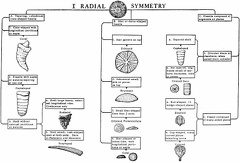 Fossil Identificaton Chart - I Radial Symmetry
Fossil Identificaton Chart - I Radial Symmetry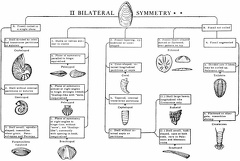 Fossil Identificaton Chart - II Bilateral Symmetry
Fossil Identificaton Chart - II Bilateral Symmetry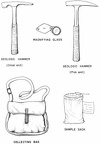 Fossil collecting Equipment
Fossil collecting Equipment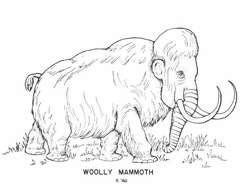 Cenozoic mammals - Woolly Mammothjpg
Cenozoic mammals - Woolly Mammothjpg Cenozoic mammals - Woolly Rhinoceros
Cenozoic mammals - Woolly Rhinoceros Cotylosaur
Cotylosaur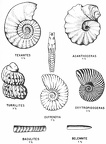 Cretaceous cephalopods
Cretaceous cephalopods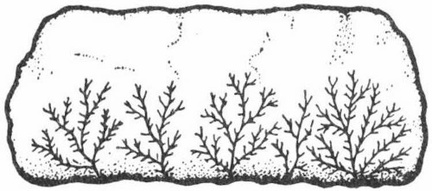 Dendrites—a typical pseudofossil
Dendrites—a typical pseudofossil Bilateral symmetry in fossil brachiopod
Bilateral symmetry in fossil brachiopod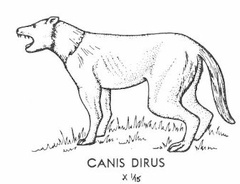 Cenozoic mammals - Canis Dirus
Cenozoic mammals - Canis Dirus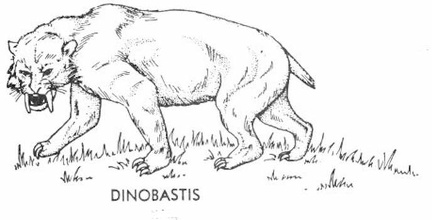 Cenozoic mammals - Dinobastis
Cenozoic mammals - Dinobastis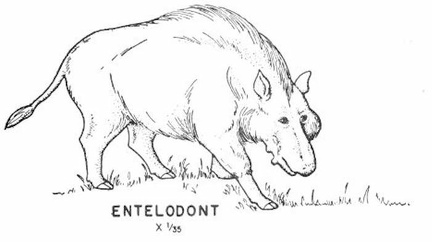 Cenozoic mammals - Entelodont
Cenozoic mammals - Entelodont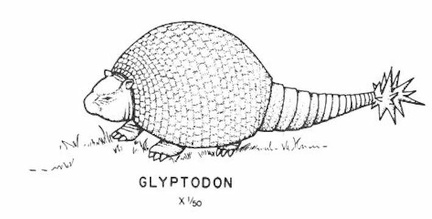 Cenozoic mammals - Glyptodon
Cenozoic mammals - Glyptodon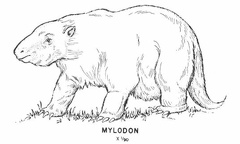 Cenozoic mammals - Mylodonjpg
Cenozoic mammals - Mylodonjpg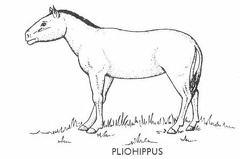 Cenozoic mammals - Pliohippus
Cenozoic mammals - Pliohippus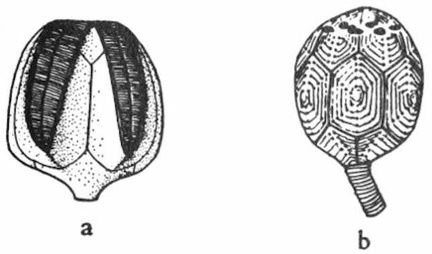 Two extinct attached echinoderms
Two extinct attached echinoderms Types of symmetry in a fossil coral
Types of symmetry in a fossil coral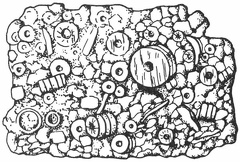 Typical Pennsylvanian crinoidal limestone
Typical Pennsylvanian crinoidal limestone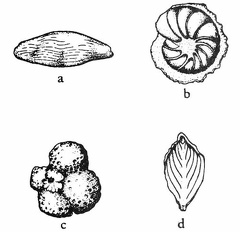 Typical Texas Foraminifera
Typical Texas Foraminifera Typical modern crinoid
Typical modern crinoid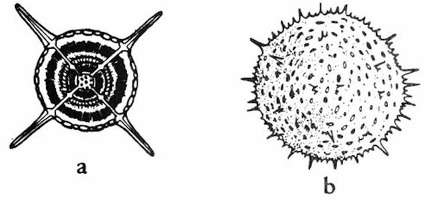 Typical radiolarians
Typical radiolarians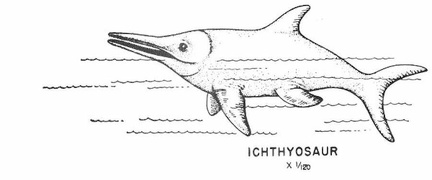 Swimming Reptiles - Ichthyossaur
Swimming Reptiles - Ichthyossaur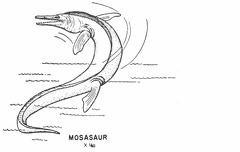 Swimming Reptiles - Mosasaur
Swimming Reptiles - Mosasaur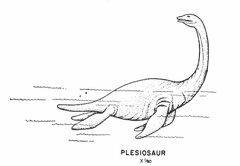 Swimming Reptiles - Plesiosaur
Swimming Reptiles - Plesiosaur Tertiary gastropods
Tertiary gastropods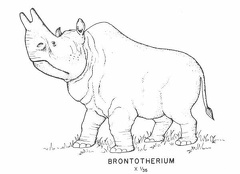 Tertiary mammals - Brontotherium
Tertiary mammals - Brontotherium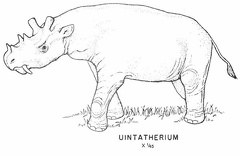 Tertiary mammals - Uintatherium
Tertiary mammals - Uintatherium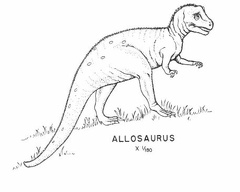 Saurischian dinosaurs - Allosaurus
Saurischian dinosaurs - Allosaurus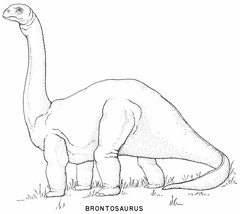 Saurischian dinosaurs - Brontosaurus
Saurischian dinosaurs - Brontosaurus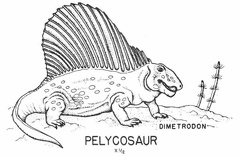 Pelycosaur
Pelycosaur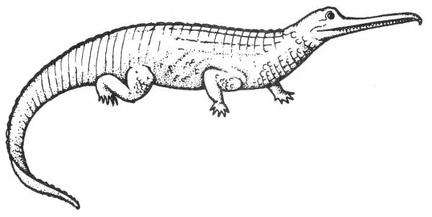 Phytosaur - Crocodile like reptile
Phytosaur - Crocodile like reptile Primitive Amphibian
Primitive Amphibian Primitive armored fish
Primitive armored fish Ornithischian dinosaurs - Trachodon
Ornithischian dinosaurs - Trachodon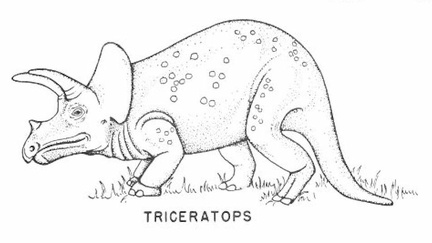 Ornithischian dinosaurs - Triceratops
Ornithischian dinosaurs - Triceratops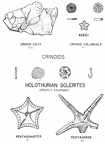 Fossil starfishes, crinoids, and holothurian sclerites
Fossil starfishes, crinoids, and holothurian sclerites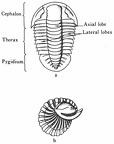 Morphology and principal parts of trilobites
Morphology and principal parts of trilobites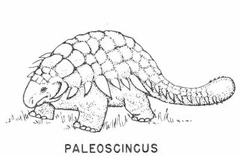 Ornithischian dinosaurs - Paleoscincus
Ornithischian dinosaurs - Paleoscincus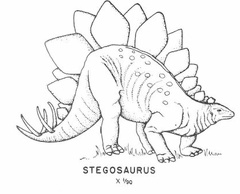 Ornithischian dinosaurs - Stegosaurus
Ornithischian dinosaurs - Stegosaurus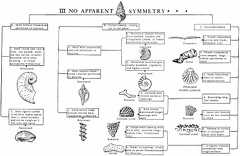 Fossil Identificaton Chart - III No apparent Symmetry
Fossil Identificaton Chart - III No apparent Symmetry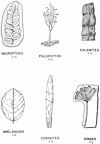 Fossil plants—tracheophytes
Fossil plants—tracheophytes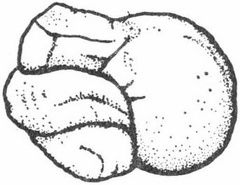 Sketch of a coprolite—fossilized animal excrement
Sketch of a coprolite—fossilized animal excrement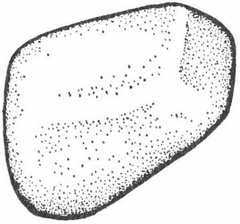 Sketch of a gastrolith—the gizzard stone of an ancient reptile
Sketch of a gastrolith—the gizzard stone of an ancient reptile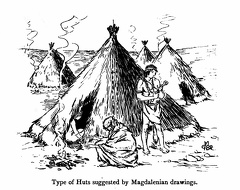 Type of Huts suggested by Magdalenian drawings 2
Type of Huts suggested by Magdalenian drawings 2 Type of Huts suggested by Aurignacian drawings
Type of Huts suggested by Aurignacian drawings The Piltdown Man's Bone Implement
The Piltdown Man's Bone Implement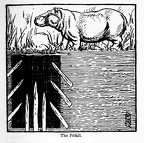 The Pitfall
The Pitfall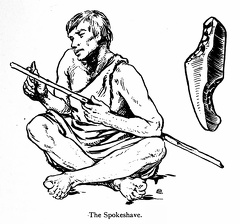 The Spokeshave
The Spokeshave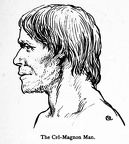 The Cro-Magnon Man
The Cro-Magnon Man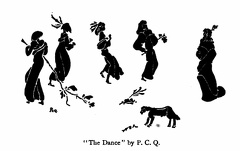 The Dance
The Dance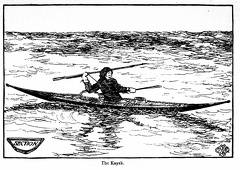 The Kayak
The Kayak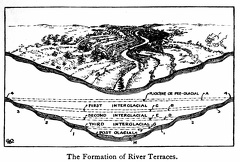 The formation of river terraces
The formation of river terraces Solutrean Flints
Solutrean Flints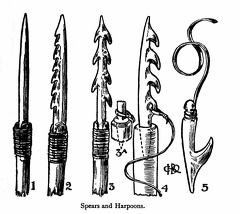 Spears and Harpoons
Spears and Harpoons Strepyan Boucher or Hand-axe
Strepyan Boucher or Hand-axe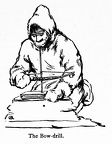 The Bow-drill
The Bow-drill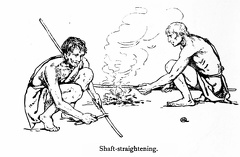 Shaft-straightening
Shaft-straightening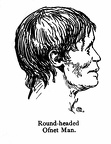 Round-headed Ofnet Man
Round-headed Ofnet Man



